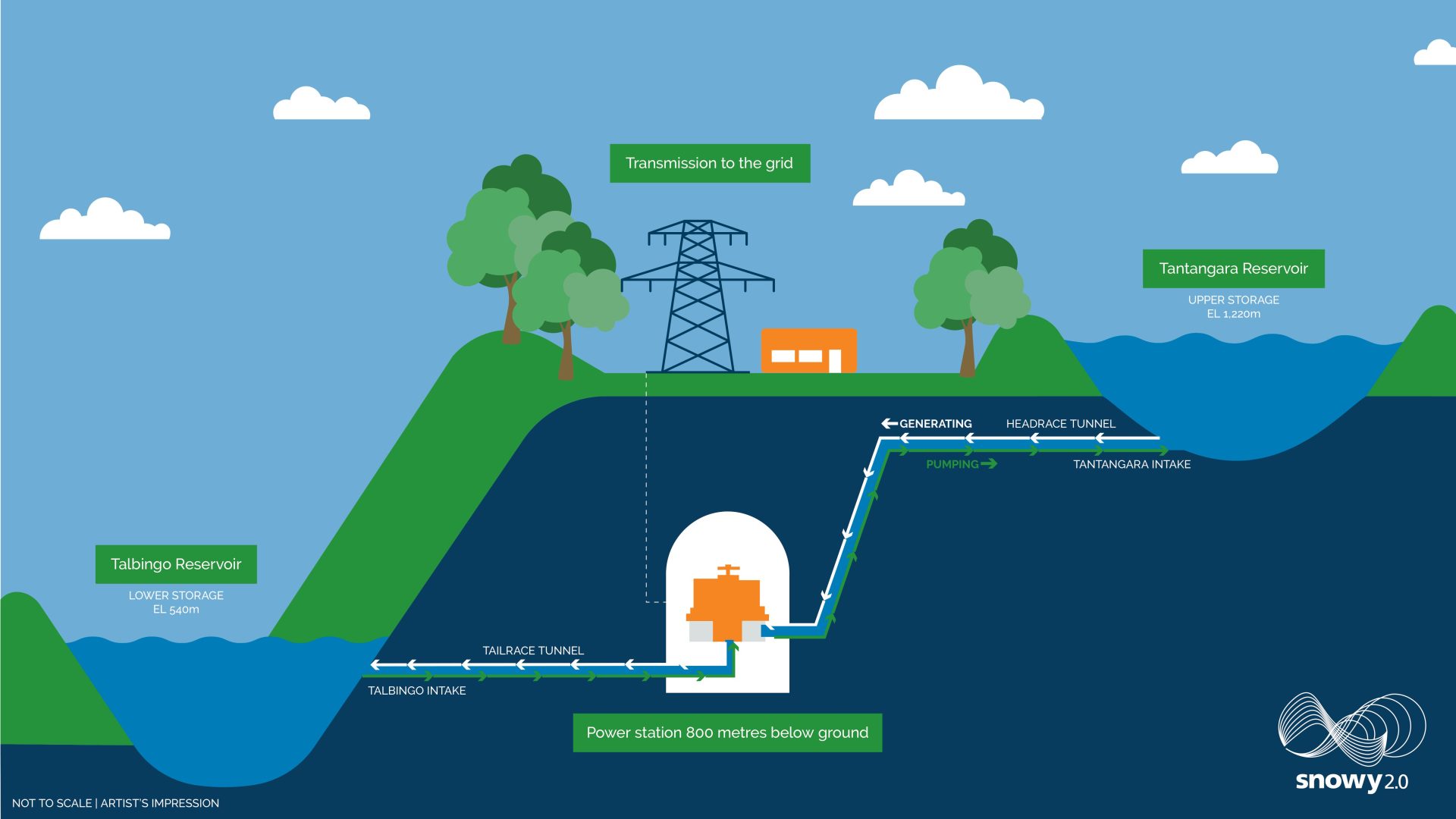- Snowy 2.0 will provide on-demand energy and large-scale storage for many generations to come.
It is the largest committed renewable energy project in Australia. Snowy 2.0 will underpin the nation’s secure and stable transition to a low-carbon emissions future at the lowest cost for consumers.
The project involves linking two existing dams, Tantangara and Talbingo, through 27km of tunnels and building a new underground power station.
Water will be pumped to the upper dam when there is surplus renewable energy production and the demand for energy is low, and then released back to the lower dam to generate energy when electricity demand is high.
It will provide flexible, on-demand power while reusing or ‘recycling’ the water in a closed loop and maximise the efficiency of renewables by using excess solar and wind energy to pump water to the higher dam, to be stored for later use.

Snowy 2.0 will provide an additional 2,000 megawatts of dispatchable, on-demand generating capacity and approximately 350,000 megawatt hours of large-scale storage to the National Electricity Market. To provide context, this is enough energy storage to power three million homes over the course of a week.
It will also create significant training and development opportunities for Australia’s workforce. Snowy 2.0 will generate around 4,000 direct jobs in the Snowy Mountains region throughout the life of the project, and thousands more in supply chain and services roles.
In 2017, a comprehensive Feasibility Study estimated project capital costs to be between $3.8 billion and $4.5 billion in real terms. This will be partly funded through a $1.38 billion equity injection from the Australian government. The remainder is financed from Snowy Hydro’s balance sheet.
Snowy 2.0 is a win-win project that will assist Australia in meeting its global commitments on climate change. It is good for renewables, will generate more power, lower electricity prices, and provide jobs and opportunities in regional Australia.
And that’s not all, Australia is building a second large pumped hydro energy storage system. The 250MW Kidston Pumped Storage Hydro Project is located in Kidston, Far-North Queensland. Read more
Against this background, energy storage required for the intermttancy of renewables is essentially a solved problem. Australia has three existing pumped hydro energy storage systems andwith the two new systems under construction (Snowy 2.0 and Kidston), the country will have more energy storage to cover the needs of the counrty for generations to come.
Author: Bryan Groenendaal
Source: Snowy 2.0















